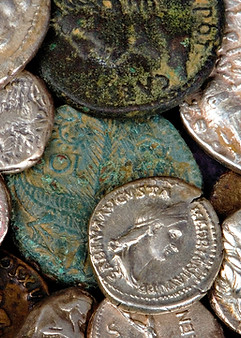
What is the history Money?
The history of money is a fascinating journey that spans thousands of years and involves significant transformations in how humans trade and store value.
Here’s an overview of its evolution:
Barter System
Prehistoric Times: Early societies relied on the barter system, exchanging goods and services directly. This system had limitations, such as the double coincidence of wants, where both parties must have what the other desires.

Metal Coins
600 BCE: The Lydians in modern-day Turkey are credited with minting the first official currency—metal coins standardized in weight and value. This innovation spread quickly to Greece, Rome, and beyond.
Roman Empire: Roman coinage became widespread, facilitating trade across the vast empire.

Commodity Money
Ancient Civilizations: To overcome barter limitations, people began using commodity money—items with intrinsic value like livestock, grains, and shells. Notably, metals such as gold and silver became popular due to their durability and divisibility.

Paper Money
7th Century: In China, during the Tang Dynasty, merchants began using promissory notes to avoid carrying heavy coins. By the Song Dynasty (11th century), the government issued the first official paper money.
Medieval Europe: The concept of paper money reached Europe much later. Banknotes issued by banks and backed by deposits of precious metals became common.

Banking Systems
17th Century: Modern banking emerged, with institutions like the Bank of England (established in 1694) issuing banknotes and creating a more stable and trustworthy financial system.

Fiat Money
20th Century: The gold standard was fully abandoned in the 1970s, leading to the widespread use of fiat money—currency without intrinsic value but backed by government decree.
Modern Times: Most of today’s currencies are fiat money, managed by central banks to control supply and maintain economic stability.

Gold Standard
19th Century: Many countries adopted the gold standard, where currency value was directly linked to gold. This system provided stability but limited monetary policy flexibility.
Early 20th Century: The gold standard began to break down during World War I, as countries needed to print more money to finance the war.

Digital Money
Late 20th Century: The advent of computers and the internet gave rise to digital transactions and electronic money transfers.
21st Century: Cryptocurrencies like Bitcoin (introduced in 2009) represent the latest evolution in money, leveraging blockchain technology for decentralized and secure transactions.

Throughout history, money has continuously evolved to meet the needs of societies, becoming more efficient and adaptable to changing economic conditions.
